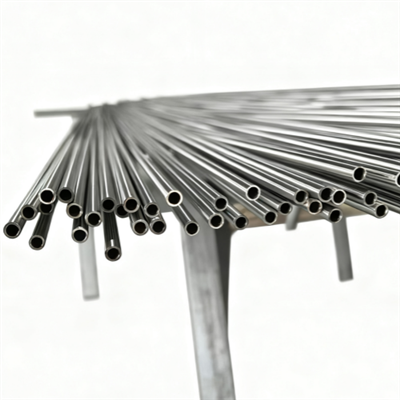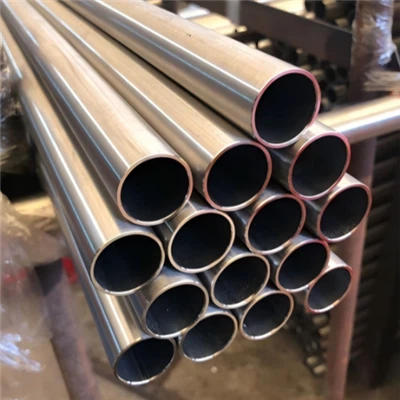Stress-corrosion cracking (SCC) is a complex and often catastrophic form of material degradation that combines the effects of tensile stress and a corrosive environment. In the context of stainless steel pipes, understanding the stress-corrosion cracking resistance is crucial, especially for applications where reliability and longevity are non-negotiable. As a supplier of 316L stainless steel pipes, I've witnessed firsthand the importance of this property in various industries. In this blog, I'll delve into what stress-corrosion cracking resistance means for 316L stainless steel pipes, the factors influencing it, and why it matters for your projects.
Understanding Stress-Corrosion Cracking
Stress-corrosion cracking occurs when a material is exposed to a specific corrosive environment while under tensile stress. The combination of these two factors can lead to the initiation and propagation of cracks, which can ultimately result in the failure of the component. Unlike uniform corrosion, which occurs evenly across the surface of a material, SCC can cause sudden and unexpected failures, making it a significant concern in many applications.
The mechanism of SCC involves three main steps: initiation, propagation, and final fracture. Initiation typically occurs at a surface defect or a site of high stress concentration, where the protective oxide layer on the stainless steel is disrupted. Once a crack is initiated, it can propagate through the material along grain boundaries or through the grains themselves, depending on the material and the environmental conditions. Finally, when the crack reaches a critical size, the remaining cross-section of the pipe can no longer support the applied load, leading to sudden failure.
Stress-Corrosion Cracking Resistance of 316L Stainless Steel Pipe
316L stainless steel is a low-carbon variant of 316 stainless steel, which is known for its excellent corrosion resistance, especially in chloride-containing environments. The addition of molybdenum to the alloy enhances its resistance to pitting and crevice corrosion, making it suitable for a wide range of applications, including marine, chemical processing, and food and beverage industries.
The low carbon content in 316L stainless steel helps to prevent the formation of chromium carbides during welding or high-temperature exposure, which can otherwise lead to sensitization and a decrease in corrosion resistance. This makes 316L stainless steel pipes particularly resistant to intergranular corrosion, a type of corrosion that can occur along grain boundaries and is often associated with SCC.


In terms of stress-corrosion cracking resistance, 316L stainless steel pipes generally exhibit good performance in most environments. However, their resistance can be affected by several factors, including the composition of the alloy, the presence of impurities, the heat treatment and fabrication processes, and the environmental conditions.
Factors Affecting Stress-Corrosion Cracking Resistance
Alloy Composition
The composition of 316L stainless steel plays a crucial role in its stress-corrosion cracking resistance. The presence of elements such as chromium, nickel, and molybdenum helps to form a protective oxide layer on the surface of the pipe, which acts as a barrier against corrosion. Chromium is particularly important for the formation of this oxide layer, as it reacts with oxygen in the environment to form a thin, dense layer of chromium oxide. Nickel enhances the ductility and toughness of the alloy, while molybdenum improves its resistance to pitting and crevice corrosion.
Impurities
The presence of impurities in 316L stainless steel can also affect its stress-corrosion cracking resistance. Impurities such as sulfur, phosphorus, and silicon can form non-metallic inclusions in the alloy, which can act as sites for crack initiation and propagation. Additionally, the presence of trace amounts of certain elements, such as copper or titanium, can either enhance or degrade the stress-corrosion cracking resistance, depending on their concentration and distribution in the alloy.
Heat Treatment and Fabrication Processes
The heat treatment and fabrication processes used to produce 316L stainless steel pipes can have a significant impact on their stress-corrosion cracking resistance. Welding, for example, can cause local changes in the microstructure and composition of the alloy, which can lead to sensitization and a decrease in corrosion resistance. To minimize these effects, it's important to use proper welding techniques and post-weld heat treatments, such as annealing, to restore the corrosion resistance of the welded area.
Cold working, such as bending or rolling, can also introduce residual stresses into the pipe, which can increase the likelihood of stress-corrosion cracking. To reduce the residual stresses, the pipes can be stress-relieved by heating them to a specific temperature and holding them there for a certain period of time.
Environmental Conditions
The environmental conditions to which the 316L stainless steel pipe is exposed can have a profound effect on its stress-corrosion cracking resistance. Chloride ions, in particular, are known to be aggressive towards stainless steel and can cause pitting and crevice corrosion, which can in turn lead to SCC. The concentration of chloride ions, the temperature, the pH of the environment, and the presence of other contaminants can all influence the rate of corrosion and the likelihood of SCC.
Importance of Stress-Corrosion Cracking Resistance in Applications
The stress-corrosion cracking resistance of 316L stainless steel pipes is of utmost importance in many applications, especially those where the pipes are exposed to harsh environments or high-stress conditions. In the marine industry, for example, 316L stainless steel pipes are commonly used for seawater cooling systems, desalination plants, and offshore platforms. The high chloride content in seawater makes these pipes susceptible to SCC, and a failure due to stress-corrosion cracking can have serious consequences, including environmental damage and costly repairs.
In the chemical processing industry, 316L stainless steel pipes are used to transport a variety of corrosive chemicals, such as acids, alkalis, and solvents. The stress-corrosion cracking resistance of these pipes is essential to ensure the safe and reliable operation of the chemical processes and to prevent leaks and spills that could pose a risk to human health and the environment.
In the food and beverage industry, 316L stainless steel pipes are used for conveying food products and for cleaning and sanitizing systems. The excellent corrosion resistance and hygienic properties of 316L stainless steel make it a preferred material for these applications, and its stress-corrosion cracking resistance helps to ensure the long-term integrity of the pipes and the quality of the products being processed.
Conclusion
As a supplier of [link text="316L Stainless Steel Pipe"] products, I understand the importance of stress-corrosion cracking resistance in ensuring the reliability and longevity of your projects. 316L stainless steel pipes offer excellent resistance to stress-corrosion cracking in most environments, thanks to their low carbon content, the addition of molybdenum, and their ability to form a protective oxide layer. However, it's important to consider the various factors that can affect their stress-corrosion cracking resistance, such as alloy composition, impurities, heat treatment and fabrication processes, and environmental conditions.
If you're in the market for high-quality 316L stainless steel pipes with excellent stress-corrosion cracking resistance, I encourage you to explore our range of products. We also offer [link text="430 Stainless Steel Pipe"] for applications where different corrosion resistance properties are required, [link text="Hexagonal Stainless Steel Pipe"] for unique design requirements, and [link text="Small Diameter Stainless Steel Tubing"] for precision applications.
Contact us today to discuss your specific needs and to learn more about how our 316L stainless steel pipes can meet your project requirements. Our team of experts is ready to assist you in selecting the right pipes and providing you with the technical support you need to ensure the success of your project.
References
- ASM Handbook, Volume 13A: Corrosion: Fundamentals, Testing, and Protection. ASM International.
- Stainless Steel Handbook. Outokumpu.
- Corrosion Resistance of Stainless Steels. NACE International.






